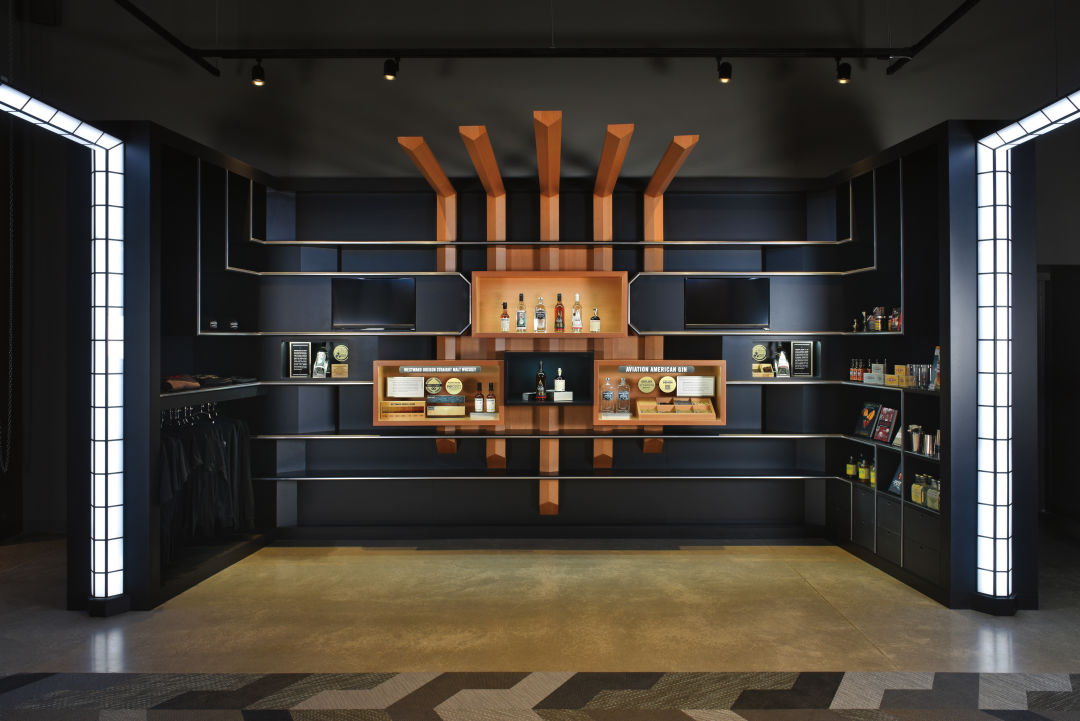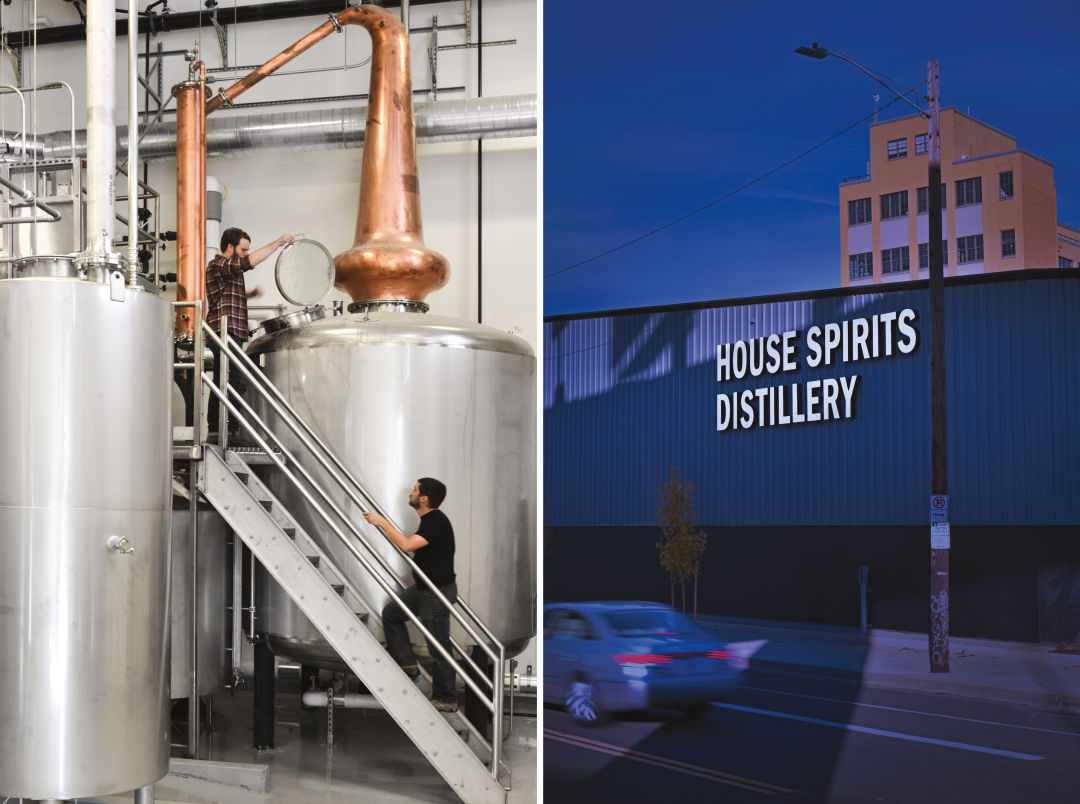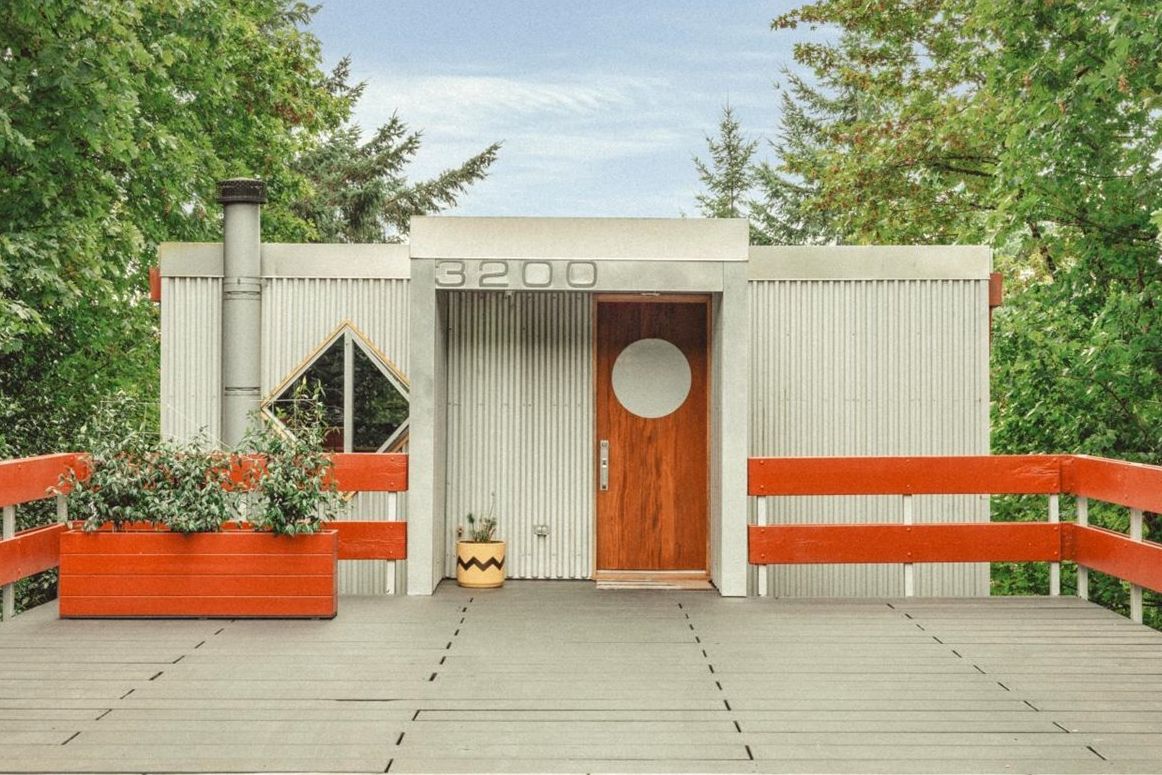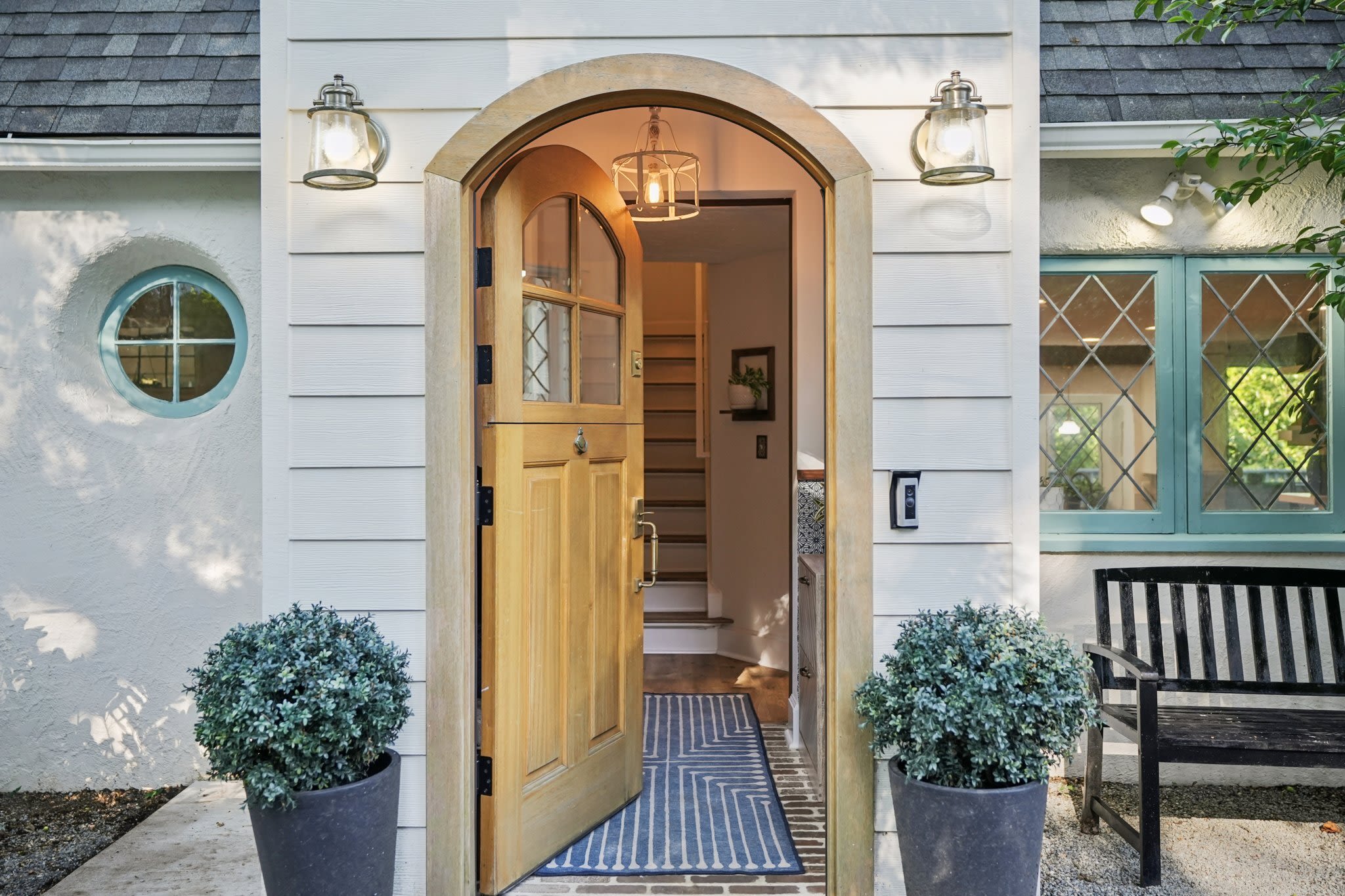How A Striking Tasting Room Takes House Spirits to New Heights

Image: Osmose Design
House Spirits Distillery’s new Central Eastside tasting room unfolds like a glossy, art deco theater. Crisp white LED lights pop against ink-black walls while vintage bottles pose like statuettes in little spotlights. The 14,000-square-foot, $6 million facility, opened in November, befits an operation that’s already become the Pacific Northwest’s largest distillery, and aims to increase its production sixfold over the next year. “It’s a true international company, and they’ve worked really hard to get there,” says Andee Hess, whose Portland-based firm, Osmose, designed the tasting room. “The space tells part of that story—it’s not just a little craft operation.”
To walk through the rolltop doors, in fact, is to exit the standard Portland vibe of intentional scruff and enter the architectural equivalent of the contoured, 1920s-inspired bottles that hold House’s own signature gin, Aviation. A beveled set of six wooden baffles frames a tasting bar in front of a picture window that peers in on the production facility’s gleaming stills—including a 3,000-gallon copper and stainless steel system that’s the largest operating still west of the Mississippi (pictured at right). “It’s a nice theatrical element, and a great background for the bartender,” says Hess. In that space, House Spirits will distill more than 1,000 barrels of whiskey in 2016, compared to 150 in 2015. “It’s been really fantastic,” Christian Krogstad, House Spirits’ founder and head distiller, says of the new space. “The step up in capacity and scale has meant not just bigger equipment, but more enhanced processes—it’s a great place to show off what we do.”

Image: Osmose Design
Though the impressive production facility enjoys the limelight in Osmose’s design, House Spirits’ history and technique are just as important to this space. Nearly 50 of its experimental bottles, from rum to ouzo, stand on podiums within a dramatically lit display case, attesting to the distillery’s work since 2004. On another wall, a three-part geometric kiosk protrudes from the black wall—one cubby displays House’s current line of spirits, while the others explain the distilling and barrel-aging processes.
“We stripped the material palette down to raw fir, sleek black, and aluminum,” says Hess. “But some of the more dynamic lines are inspired by Aviation—we took a cue from that for sure. It was really a push to explore some design direction that you don’t really see locally.” Cheers to that.

Image: Osmose Design




